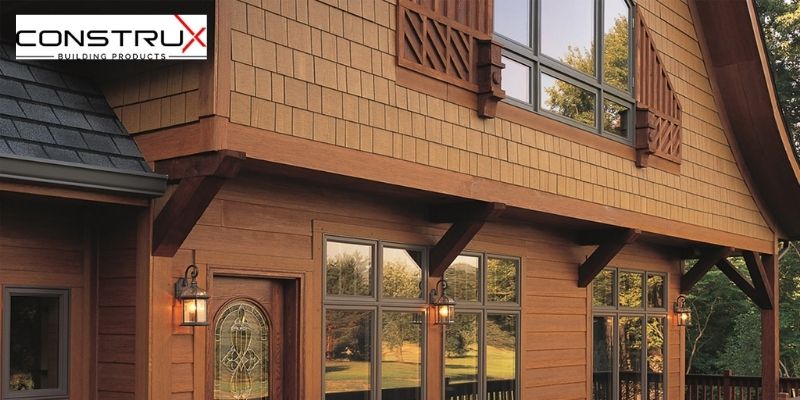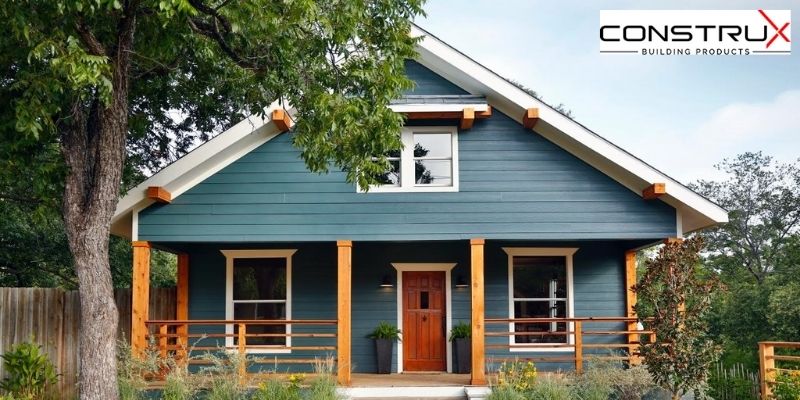
How To Choose The Best Siding For A Small House
The outdoor of your home plays a big role in giving you and your family the best protection that you need. Sidings will not only protect you and your family from external elements, but it reveals the aesthetic nature of your home.
Before you opt for a siding, you must consider the appearance of your door and window and your exterior trim. Find out if you need to change it. If you had an old siding that needs replacement, then you may have to replace the trims too.
If your house is small, and you want to make it look appealing, while also protecting your home, your siding must be good enough to upgrade the exterior of your home. These are several sidings you can choose from to make your small house outstanding.
Wood Siding Is A Common Choices for Maintaining Small Houses
There are different styles of wood sidings, and they include the following: clapboards, shakes, board and batten, and shingles. With wood sidings, your small home will look attractive.
Choosing Cedar And Pine
Cedar and pine are the most common wood species used for outdoor sidings. Sidings made with cedar materials include red cedar, white cedar, and yellow cedar. They all have colors that match their names. On the other hand, pine sidings are cheaper than the cedar species. But they may not be able to counter the actions of insects and rot like cedar.
Cedar sidings may be a better option than the pine species, even though they are expensive. They do not contract, warp, crack and expand, like pines because they are more stable. However, whether you choose the cedar or pine species of sidings with a perfect finish, they will both look good on your home and will last long.
Installing Wood Shingle Sidings
Some siding types, such as wood shingle sidings, can be installed on top of an old clapboard siding. Nevertheless, it is better to completely get rid of an old siding before installing a new one. It is also important to restore damaged flashing or trim in your door and window openings before installing the new sidings.
For maintenance, regularly inspect your sidings for signs such as warp damages, rot, and cracks that must be repaired. Wood sidings must be refinished as often as four to six years.
Choose Fiber Cement Sidings For Versatility And Durability

For small houses, fiber cement sidings are the best options to protect and uplift the home. Cement sidings are composite materials that make up cellulose fibers and cement. They are pressed and formed to produce several other sidings, such as panels, clapboards, exterior trims, boards, and battens. They are unyielding and dimensionally stable. Some other good qualities of cement sidings are as follows:
They Withstand Moisture and Rot Problems
If you are living in an area that is liable to storms, floods, and hurricanes, fiber cement sidings can be unyielding. Wood sidings can be affected by saltwater, and wild wind can easily blow off aluminum and vinyl siding, but cement sidings can withstand all these.
They Are Non-Combustible
Fire can easily burn down vinyl and wood siding, but this may not happen with fiber cement sidings because they are impenetrable. Some insurance companies give a deduction for any homeowner using it. Areas that are liable to fire accidents make fiber cement their best siding choice.
This Siding Can Keep Off Pest From Invading Your Home
Pests such as squirrels, termites, and woodpeckers are often found building their little homes around several sidings. These wild pests can also cause damage to sidings, but if your home’s siding is fiber cement siding, no destruction will come to it.
They Can Resist Bad Weather Conditions
Fiber cement sidings can withstand flying debris and hail during a severe storm. It can also resist the effects of high temperature, which can lead to shrinking and swelling in wood sidings, causing them to crack.
Engineered Woods Can Be A Good Compromise For Small Homes
Most homeowners like the feel, workability, and appearance of solid wood, but pine sidings are less durable and cedar sidings too expensive. For you to be satisfied as a homeowner, engineered wood siding can be your great choice.
There are several kinds of engineered sidings to go for. Clapboards made with components of resin and wood flakes come alongside a factory-made primer with a length of about 16ft. This length makes the butt joints insignificant. Plywood rated “T1-11” are wood panels distinctive with the size of 4x8. They can be placed directly on top of a wood frame. It does not require the use of external sheathings. Their surfaces are rustic looking, rough, and they have lapped edges that conceal seams connected within the panel.
Vinyl Siding Is Affordable

Vinyl sidings are good options for small houses. They will give you value for your money. They are durable, tough, and easy to install. Vinyl sidings are common, and homeowners appreciate them.
Nowadays, homeowners make their choices from different siding styles and colors. They also go for products that are similar to wood shingles, even stones, and wood-grain lap sidings.
To maintain vinyl sidings, regularly clean them with a hose and brush. They can be installed on newly constructed walls. They can also be installed on top of existing sidings. For insulation purposes, insulated vinyl sidings have firm foam insulation that occupies the hollow portion at the back of the siding panel.
Conclusion
Sidings are protective and are attached to the external parts of a house, especially near the window areas. They are popular for uplifting the appearance of a home. Therefore, choosing the best ones that match your small home is pertinent.
Wood sidings, vinyl sidings, fiber cement sidings, and engineered woods are all great for protecting the side of your home. When choosing the best siding, you must consider its durability, the environment where you live, and the complete nature of the siding.
Your home’s siding must be protected against pests, weather conditions, and every other bad external element. A homeowner who wishes to show off his or her home design can boost curb appeal by choosing the best siding.








COMMENTS